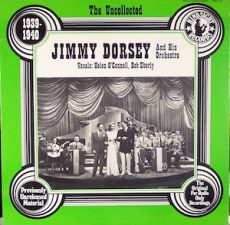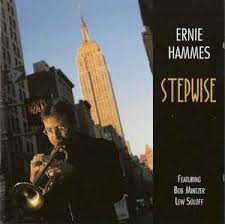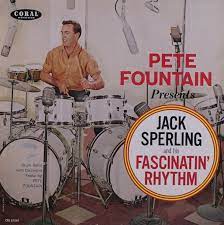
Daily Dose Of Jazz…
Sonny Lee was born Thomas Ball Lee on August 26, 1904 in Huntsville, Texas. While a student at Texas State Teachers’ College in the early 1920s he played with Peck Kelley, then moved to St. Louis, Missouri where he worked with the Scranton Sirens, Frankie Trumbauer, Gene Rodemich, Vincent Lopez, and Paul Specht.
By 1932 he had joined the Isham Jones Orchestra, remaining with Jones until 1936. Concomitantly he played with Benny Goodman in 1934-35. After this stint he went to work with Artie Shaw, Charlie Barnet, Woody Herman, and Bunny Berigan. In 1938 he joined the Jimmy Dorsey Orchestra, where he played until 1946.
Trombonist Sonny Lee, who is credited on nearly 200 recording sessions between 1925 and 1946, transitioned on May 17, 1975 in Amarillo, Texas.
More Posts: history,instrumental,jazz,music,trombone

Daily Dose Of Jazz…
Lou Colombo was born on August 22, 1927 and raised in Brockton, Massachusetts. He began playing trumpet in the 1940s, at age 12. Aftere serving in the Army band in World War II he had hopes of playing professional baseball, saw him signed to the Brooklyn Dodgers, but a broken ankle forced him to curtail that dream. He then formed his own band in the 1950s and toured with Buddy Morrow, Perez Prado, Dick Johnson and the Artie Shaw Orchestra. He also played with Dizzy Gillespie and Louis Armstrong during his career.
So he dove into music and his trumpet. His career included stints with the Charlie Spivak and Perez Prado bands and the Artie Shaw Orchestra. On Cape Cod, Lou’s gigs with Dick Johnson and Dave McKenna were legendary, as is their superb Concord album, I Remember Bobby, a tribute to Bobby Hackett.
Known for his one-handed trumpet style, he was a mainstay in the Cape Cod, Massachusetts jazz scene for more than six decades and maintained a home in Fort Myers, Florida. Trumpeter Lou Columbo, who also played flugelhorn, baritone horn and pocket trumpet, transitioned unexpectedly at 84 on March 4, 2019 in a car crash in Fort Myers after making a turn and his vehicle was struck by another.
More Posts: bandleader,history,instrumental,jazz,trumpet

Daily Dose Of Jazz…
Jiggs Whigham was born Oliver Haydn Whigham III on August 20, 1943 in Cleveland, Ohio and began his professional career at the age of 17, joining the Glenn Miller/Ray McKinley orchestra in 1961. He left that band for Stan Kenton, where he played in the touring mellophonium band in 1963 before settling in New York City to play commercially.
Finding commercial playing frustrating, Whigham migrated to Germany where he still lives. He played for many years in the big band of Kurt Edelhagen, was a featured soloist in the Bert Kaempfert orchestra, and was also a member of the Peter Herbolzheimer band.
He has produced an extensive discography as a leader, including work with Bill Holman, Niels-Henning Ørsted Pedersen, Carl Fontana, and many others.
Recent years have seen Jiggs as musical director of the RIAS Big Band in Berlin, Germany. He is formerly conductor of the BBC Big Band in Great Britain and currently co-director of the Berlin Jazz Orchestra with singer Marc Secara.
As an educator he has taught at the Hochschule für Musik in Berlin, been a visiting tutor and artist at the Guildhall School of Music and Drama in London, England and the Royal Northern College of Music in Manchester and KUG in Graz, Austria
He is featured on the Berlin Jazz Orchestra albums Update, You’re Everything, Songs of Berlin and music DVD Strangers In Night – The Music Of Bert Kaempfert. He is artist-in-residence for the Conn-Selmer company, maker of the King Jiggs Whigham model trombone.
Trombonist Jiggs Whigham is the musical director for the Bundesjazzorchester working with the top student jazz musicians in Germany. He continues to tour worldwide as soloist, conductor, and educator.
More Posts: bandleader,educator,history,instrumental,jazz,music,trombone

Daily Dose Of Jazz…
Ernie Hammes was born on August 18, 1968 in Esch-sur-Alzette, Luxembourg and studied at the Conservatories of Esch-sur-Alzette and Metz, France. He would later study at the Manhattan School of Music and the Berklee College of Music in Boston, Massachusetts.
Since 1997, Hammes has performed in New York City, traveled widely to jazz venues and festivals across Europe and North America. The Duke Ellington Orchestra has flourished for over forty-eight years since the death of the Duke, himself. As of 2013, Hammes is the only European known to have been a member of the Duke Ellington Orchestra from any era.
In his native Luxembourg, Ernie is the founder, director and lead trumpet in the Luxembourg Jazz Orchestra and since 1987 he has been a member of the Musique Militaire Grand-Ducale (the Luxembourg Army Band) where he is lead trumpet and, since 1994, leader of the big band.
Trumpeter Ernie Hammes continues to perform, compose and lead orchestras.
More Posts: bandleader,history,instrumental,jazz,music,trumpet

Daily Dose Of Jazz…
Jack Sperling was born on August 17, 1922 in Trenton, New Jersey. In 1941 he played with trumpeter Bunny Berigan. After World War II, he and Henry Mancini joined the Glenn Miller band when it was led by Tex Beneke. Drawing attention with his performance on the song St. Louis Blues in 1948, he then joined Les Brown and His Band of Renown, which played regularly for the Bob Hope radio program.
Sperling and other members of Brown’s band joined Dave Pell’s octet in 1953, recorded with the octet on Plays Irving Berlin and The Original Reunion of the Glenn Miller Orchestra. From 1954 to 1957 he was a member of Bob Crosby’s Bobcats. During the rest of his career, he worked in bands led by Charlie Barnet, Page Cavanaugh, Pete Fountain, and Benny Goodman.
He was among the studio musicians who accompanied Henry Mancini on the television show Peter Gunn. Jack recorded with him on the film soundtracks Charade and Days of Wine and Roses. He was the featured solo drummer on the theme song for the TV show Hogan’s Heroes and from 1959 to 1972 he was under contract with the NBC Orchestra. He worked on The Tonight Show Band, Rowan & Martin’s Laugh-In, and TV variety shows hosted by Bob Hope, Dean Martin, and Andy Williams.
In the music world, he recorded with Rosemary Clooney, Bobby Darin, Sammy Davis Jr., Doris Day, Ella Fitzgerald, The Four Freshmen, Lena Horne, Peggy Lee, Elvis Presley, Frank Sinatra, and Mel Tormé.
Drummer Jack Sperling, who was a big band and studio musician, transitioned on February 26, 2004.
More Posts: drums,history,instrumental,jazz,music


